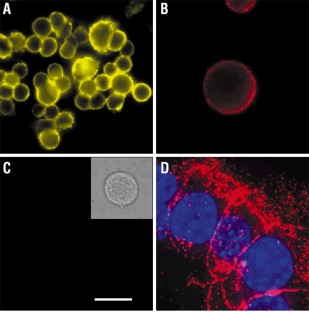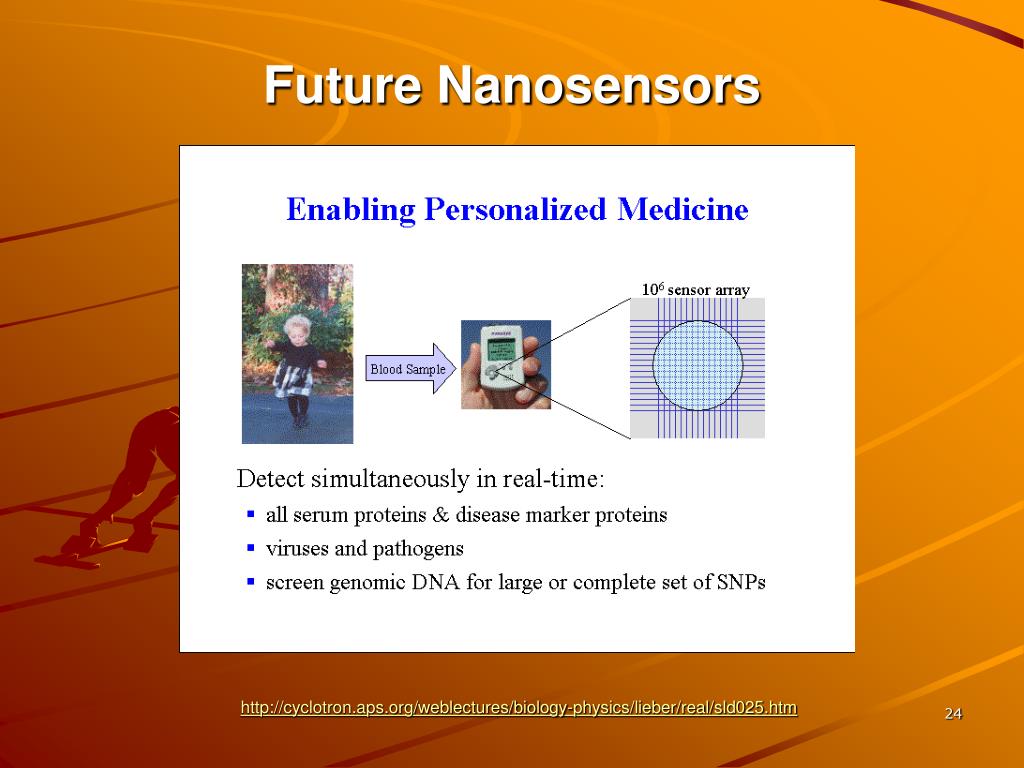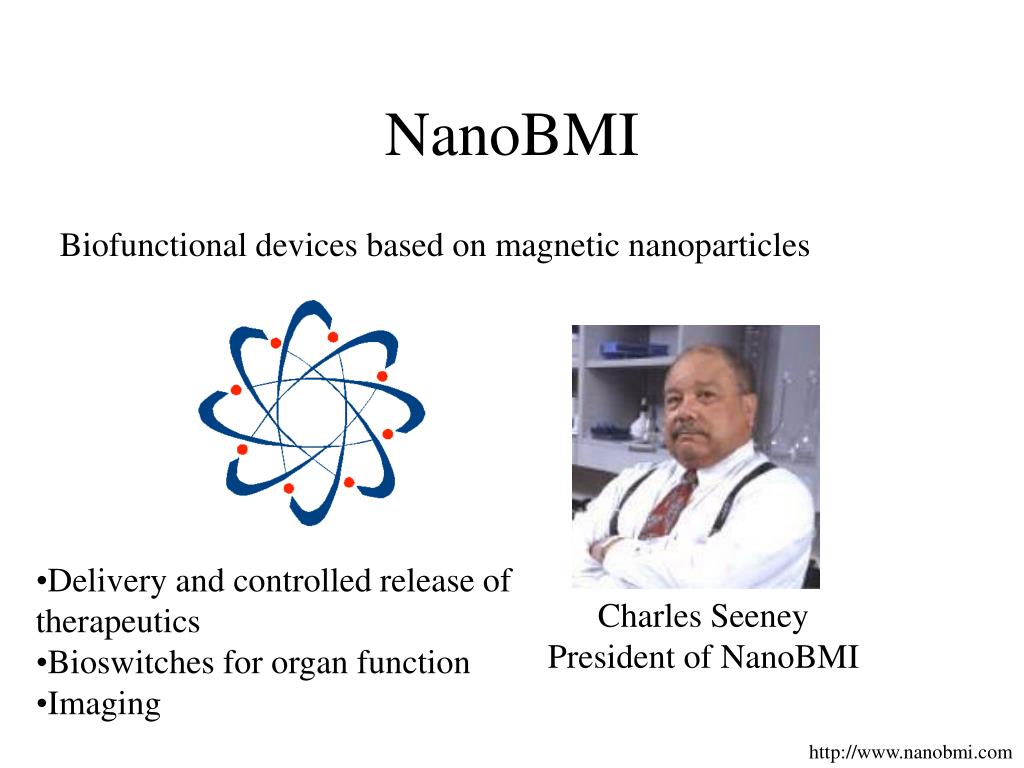42 semiconductor nanocrystals as fluorescent biological labels
› publication › 13538070Semiconductor Nanocrystals as Fluorescent Biological Labels Oct 01, 1998 · University of California, Los Angeles Abstract and Figures Semiconductor nanocrystals were prepared for use as fluorescent probes in biological staining and diagnostics. Compared with conventional... Silicon Nanocrystals as an Enabling Material for Silicon Photonics Silicon nanocrystals (Si-nc) is an enabling material for silicon photonics, which is no longer an emerging field of research but an available technology with the first commercial products ...
QUANTUM DOTS IN MEDICAL SCIENCE AS CANCER TRACER - ATMega32 AVR Quantum dots (QDs) are semiconductor nanocrystals with unique photophysical properties. Their excellent optical properties are a promising alternative to organic dyes for fluorescence biomedical applications. In the biomedical sciences, fluorescence is used as a powerful tool for labeling, imaging, and tracking certain molecules or cells.

Semiconductor nanocrystals as fluorescent biological labels
Joan van der Waals colloquium - Leiden University 20 Apr 2001, Thomas Basche (Univ. of Mainz): Microscopy and spectroscopy of single nanoparticles: Semiconductor nanocrystals and carbon nanotubes 09 Mar 2001, J. Mertz (ESPCI Paris): Biological imaging with Femtosecond lasers 23 Feb 2001, W.L. Vos (Van der Waals-Zeeman Inst. › stable › 2895733Semiconductor Nanocrystals as Fluorescent Biological Labels Semiconductor nanocrystals were prepared for use as fluorescent probes in biological staining and diagnostics. Compared with conventional fluorophores, the nanocrystals have a narrow, tunable, symmetric emission spectrum and are photochemically stable. The advantages of the broad, continuous excitation › paper › SemiconductorSemiconductor nanocrystals as fluorescent biological labels. Sep 25, 1998 · Science. Semiconductor nanocrystals were prepared for use as fluorescent probes in biological staining and diagnostics. Compared with conventional fluorophores, the nanocrystals have a narrow, tunable, symmetric emission spectrum and are photochemically stable. The advantages of the broad, continuous excitation spectrum were demonstrated in a ...
Semiconductor nanocrystals as fluorescent biological labels. What are the methods of fluorescent labeling? - Peg Linkers Review Fluorescent proteins are suitable for labeling tumor cells, viruses, genes, etc. Commonly used are GFP, EGFP, RFP (DsRed), etc. Fluorescent dye labeling is the same as in vitro labeling. Cy3, Cy5, Cy5.5 and Cy7 are commonly used, which can label antibodies, peptides, and small molecule drugs. Coupled electrochemiluminescent and resonance energy transfer ... The electrochemiluminescence and resonance energy transfer (ECL-RET) method was adopted to detect miRNAs, in which the two-dimensional Ti3C2 Mxenes with high surface area modified with CdS:W nanocrystals (CdS:W NCs) were used as ECL signal emitter. Mxenes with a specific surface area of 5.2755 m2/g carried more emitters and promote ECL intensity. As an energy acceptor, BiOCl nanosheets (BiOCl ... Red Upconverter Nanocrystals Functionalized with Verteporfin for ... Synthesis and Characterization of Pristine ZrO 2 Nanocrystals Co-Doped with Er 3+ and Yb 3+ Ions. A facile hydrothermal route [40,41] was applied for the preparation of ZrO 2 nanocrystals co-doped with Er 3+ and Yb 3+. Three samples were prepared with a fixed Er 3+ loading (0.5%) and a variable sensitizer Yb 3+ loading (2%, 5%, and 10%). Luminescence encoding of polymer microbeads with organic dyes and ... These luminescent nanocrystals with sizes < 10 nm commonly have a core/shell particle architecture consisting of an inorganic core, an inorganic surface passivation shell, and a stabilizing organic...
Nanocrystals Thermal Insulation Applications - academia.edu A ceramic aerogel made with nanocrystals and embedded in a matrix for use in thermal insulation applications A team of researchers at the Harbin Institute of Technology, in China, working with a colleague in the U.S., has developed a new kind of aerogel for use in flexible thermal insulation material applications. Quantum Dots: A Brighter Future for Clinical Diagnostics - Medscape The assay is based on the mixing of two different complementary oligonucleotide probes, one biotinylated and the other labeled with QDs, with the DNA extracted from patient cervical swabs. The... NT/ Lipid nanoparticles carry gene-editing cancer drugs past tumor ... These metal-semiconductor yolk-shell nanocrystals can serve as highly effective photocatalysts for many applications. Physicists at The Australian National University (ANU) have developed tiny... 《厦门大学学报(自然科学版)》 in order to improve the encapsulation efficiency of quantum dots in polystyrene microspheres,cdse/cds core-shell quantum dots were firstly prepared by thermal cycling single precursor coupling...
Nano Letters | Ahead of Print - ACS Publications Articles ASAP (as soon as publishable) are posted online and available to view immediately after technical editing, formatting for publication, and author proofing. July 2022 - Generation of a selective small molecule inhibitor of the ... C3d-defined complement receptor-binding peptide p28 conjugated to circumsporozoite protein provides protection against Plasmodium berghei. of Alzheimer's disease lwlin.me.berkeley.edu › me118 › papersSemiconductor Nanocrystals as Fluorescent Biological Labels Semiconductor Nanocrystals as Fluorescent Biological Labels Marcel Bruchez Jr., Mario Moronne, Peter Gin, Shimon Weiss,* A. Paul Alivisatos* Semiconductor nanocrystals were prepared for use as ßuorescent probes in biological staining and diagnostics. Compared with conventional ßuorophores, Methods and Applications in Fluorescence 3 Year Journal's Impact IF ... A critical comparison of lanthanide based upconversion nanoparticles to fluorescent proteins, semiconductor quantum dots, and carbon dots for use in optical sensing and imaging. ... Tm Co-doped upconversion nanocrystals. ... fluorescent probes, labels and (nano)materials. It will feature both methods and advanced (bio)applications and accepts ...

Immunofluorescent labeling of cancer marker Her2 and other cellular targets with semiconductor ...
Liquid crystal-templated chiral nanomaterials: from chiral plasmonics ... Fluorescent carbon quantum dots share the unique electronic and optical characteristics of semiconductor quantum dots and offer great advantages over the existing limitations such as elemental ...
Fluorescence Recovery Based on Synergetic Effect for ALP Detection Application of biological sample analysis. ... Determination of the activity of alkaline phosphatase based on the use of ssDNA-templated fluorescent silver nanoclusters and on enzyme-triggered silver reduction. Microchim Acta, 184 ... Aqueous based semiconductor nanocrystals. Chem Rev, 116 (2016), pp. 10623-10730. CrossRef View Record in Scopus ...
合成生物学与荧光成像技术 These novel fluorescent materials and molecular labeling techniques could be applied to molecular imaging and single particle tracking to explore intracellular molecular dynamic mechanisms. And new fluorescent nanomaterials developed in synthetic biology also can be used to tag different parts of viruses to trace the mechanism of their invasion ...
Science | AAAS Science is a leading outlet for scientific news, commentary, and cutting-edge research. Through its print and online incarnations, Science reaches an estimated worldwide readership of more than one million. Science 's authorship is global too, and its articles consistently rank among the world's most cited research.
Photonic and Semiconductor Materials Based on Cellulose Nanocrystals Cellulose nanocrystals (CNCs) are renewable, sustainable nanomaterials, typically produced by strong sulfuric acid hydrolysis of lignocellulosic biomass. CNCs can self-assemble in aqueous, and ...
Structural dynamics of light harvesting proteins, photosynthetic ... A basic 13 C NMR experiment encompasses single pulse excitation, also termed direct polarization (DP), of the 13 C nuclei (90° pulse) followed by 13 C detection. A drawback of this type of NMR experiment is that 13 C longitudinal T 1 relaxation times for molecules with low internal motions are very long, requiring long recycle delay intervals in between repeated scans.
Special Issue "Interactions of Nanoparticles with Biomolecules" Thus, in recent years, there has been a steadily growing interest in the utilization of nanoparticles in various biomedical applications, including targeted drug and gene delivery, bioimaging, biosensing, cancer therapy through hyperthermia or photoablation, theranostics, and cell labeling.
Science Advances | AAAS Science Advances is the American Association for the Advancement of Science's (AAAS) open access multidisciplinary journal, publishing impactful research papers and reviews in any area of science, in both disciplinary-specific and broad, interdisciplinary areas. mission & scope.







Post a Comment for "42 semiconductor nanocrystals as fluorescent biological labels"